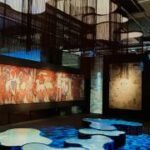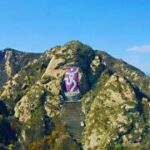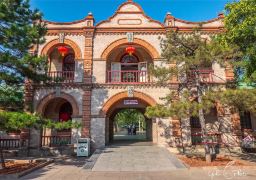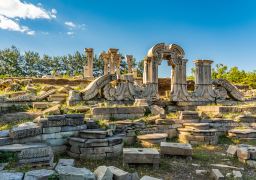Xian Nong Tan stands as an outstanding example of sacrificial architecture from the Ming and Qing dynasties, with a basically intact architectural layout from the Ming era. It serves as a physical testament to the institutional systems of feudal society in China, boasting significant historical and artistic value. Records indicate that Xian Nong Tan, also known as ‘Shan Chuan Tan’, was originally constructed in 1420, making it over 580 years old.
Located southwest of Zhengyang Gate in Beijing, Xian Nong Tan was established in 1420 and corresponds to the architectural complex of the Temple of Heaven (originally known as the Temple of Heaven and Earth, renamed in the Ming Jiajing period) to its east. At the time of its inception, Xian Nong Tan followed the ceremonial regulations of the old capital Nanjing from the early Ming period, combining the spirits of agriculture, mountains and rivers, and the Tai Sui into a single complex of temple architecture. In the tenth year of the Jiajing era (1513), the addition of the Altar of Heaven and Earth Gods to the southern part of the inner wall led to the current layout of Xian Nong Tan. Covering an area of approximately 2000 acres, Xian Nong Tan is encircled by two concentric walls. The outer wall measures about 1424 meters from north to south and about 700 meters from east to west, forming a shape that is round in the north and square in the south (the northern part no longer exists). The inner wall spans about 446 meters from north to south and about 306 meters from east to west. Xian Nong Tan comprises five groups of buildings: 1. Qingcheng Palace; 2. Tai Sui Hall (including the worship hall and the incense burner in front); 3. Divine Kitchen (including the slaughtering pavilion); 4. Divine Granary; 5. Ju Fu Hall. Additionally, there are four altars: Guan Geng Tai, Xian Nong Tan, Altar of Heaven, and Altar of Earth. These groups of buildings and altars are mostly located within the inner wall, with only Qingcheng Palace, Altar of Heaven, and Altar of Earth situated outside the inner wall but within the outer wall. Furthermore, there is an acre and a third of arable land in front of the inner wall’s Guan Geng Tai, which was the land personally cultivated by the emperor during the Jitian ritual. The entire site is open year-round; closed all day on Monday; open from 09:00 to 17:00 Tuesday through Sunday.Xian Nong Tan: A Prominent Example of Ming and Qing Sacrificial Architecture
Xian Nong Tan stands as an outstanding example of sacrificial architecture from the Ming and Qing dy[...]









